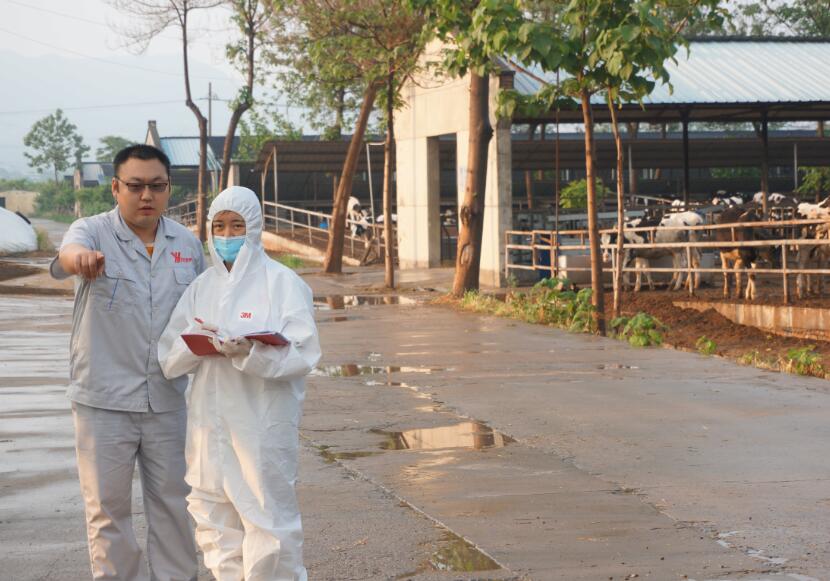US Department of Agriculture report neutral bearish
Last Friday, the US Department of Agriculture announced the December supply and demand report, no adjustments were made for the US soybean yield, total output, crushing, export, and ending inventory. However, the previous market forecast for US soybean end stocks was 470 million bushels. The USDA ’s actual inventory was still 480 million bushels in November, which was clearly higher than market estimates. Global soybean ending stocks were estimated from 81.53 million in November. Tons increased to 82.85 million tons. Even so, after the report was released, CBOT soybeans did not fall but rose, indicating that the market has had the US Department of Agriculture's experience of increasing the production of US beans for 5 consecutive months, and it has sufficient immunity to the high yield of US beans. Pay more attention to the export of American beans.
The current US soybean export situation is unsatisfactory. The US Department of Agriculture's export sales report released on Thursday showed that as of the week of December 1, the net sales of US soybean exports in 2016/2017 increased by 1.461 million tons, higher than 1 million to 1.3 million tons. The market's estimated range increased by 10% month-on-month and 5% higher than the 4-week average. The export situation of US soybeans is significantly better than the same period last year. According to the current progress, it is not a problem to complete the export target of 2.05 billion bushels in the US Department of Agriculture's December supply and demand report.
Uncertainty still exists in South American weather
Due to the good weather conditions, as of December 8th, Brazil's soybean planting progress has reached 95%, higher than 93% in the same period last year. At present, the market expects Brazilian soybean production to be between 101 million and 103 million tons, but there is a slight drought in the states of Mato Grosso do Sul and Rio Grande do Sul, such as Brazil ’s soybean output above 101 million tons given by the market early last year, but due to The weather is not beautiful, and the actual harvested output is only 96.5 million tons.
Due to drought and little rain, the progress of soybean planting in Argentina has been lagging behind this year. As of December 7, Argentina's soybean planting progress was only 57.6%, still lagging behind the same period last year and the 5-year average. Looking forward to the market outlook, the probability of a La Niña climate is still high this year. Once it appears, Argentina ’s soybean production will inevitably suffer from drought. When the planting area has fallen by 2.5%, and then the drought is added, Argentina ’s soybean production may be lower than the current Market estimates.
Domestic soybean and soybean meal supply is tight
Due to the small amount of oilseeds such as soybeans and rapeseeds arriving in Hong Kong in the early days, the stock level of port oilseeds was low. Although the amount of oilseeds in Hong Kong has increased in recent weeks, due to the good squeeze profits, the operating rate of oil plants is at a high level, making the current port Soybean stocks are difficult to accumulate effectively. According to statistics, the utilization rate of soybean crushing capacity last week was 56.82%, an increase of 1.72 percentage points from the previous week's 55.10%.
As the operating rate of oil plants increased, domestic soybean stocks continued to decline last week. Although the oil plant has a high start-up rate, a large amount of soybean crushing, and a large output of soybean meal, due to the good demand for soybean meal and a large amount of unexecuted contracts, the pressure on soybean meal inventory in the oil plant is low. Taking North China as an example, the current soybean meal inventory of oil mills is only about 0.4 million tons, which is at a relatively low level in the same period in history.
At the same time, as the Spring Festival approached, live pigs and poultry farming began to enter the concentrated fattening period, the input of protein feed increased, and the demand for soybean meal expanded gradually. According to the survey, the number of pigs in 86 breeding enterprises increased by 0.06% in November compared with October, and the number of capable sows increased by 0.01% in October. From the point of view of soybean meal sales, the turnover of soybean meal in oil mills is good. The domestic soybean meal turnover last week was 1.581 million tons, an increase of 30.27% from the previous month.
In summary, at present, the high yield of US soybeans has basically been digested, and the market is very sensitive to the news of soybean production in South America. The weather is easy to become the subject of market hype in the later period. In addition, the domestic soybean meal inventory is low and the demand is good. fall.





